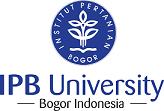WOOD HARVESTING DAMAGES, REGENERATION AND GROWTH IN THE RESIDUAL STAND OF DIPTEROCARP FORESTS (A Case Study in the Forest Concession Area of PT. Narkata Rimba, East Kalimantan, Indonesia)
Abstract
The research was conducted in the concession area of PT. Narkata Rimba (NR), Muara Wahau, Kabupaten Kutai, Kalimantan Timur, Indonesia. The result obtained indicated that the levels of residual stand damages positively correlated to the wood harvesting intensity, the incident of damages on small trees was greater and most of the damaged trees were heavily injured. The tree’s mortality occurred during the wood harvesting year was 6.0-26.6% and one year after wood harvesting was 2.0-13.6%. After than the tree’a mortality was 0.5-3.6%, meanwhile the mortality of tree’s in a virgin forest was 0.9-3.4% per year. It seems that higher damage occurred in residual stands causes the higher tree mortality. The seedling density of commercial dipterocarp species, in both the logged-over forests and a virgin forest were more then the recommended minimum amount (1.000 sedlings per ha) as stated in the regulation of the Indonesian Selective Cutting and Planting (Tebang Pilih Tanam Indonesia/TPII) System. The average growth of diameter and volume of 25 nucleus tree hectare per year during the fist five years after wood harvesting was 0.70 cm/years and 1.4235m3/ha/year, respectivety, to anticipate the second cutting cycle, it is recommended to control the residual stand damages with an optimal wood harvesting intensity and to improve the technique of silviculture of dipterocarp forest with the purpose to increase the diameter growth of nucleus tree.





